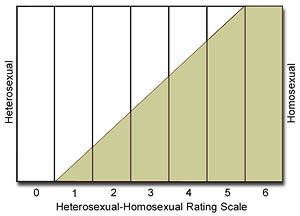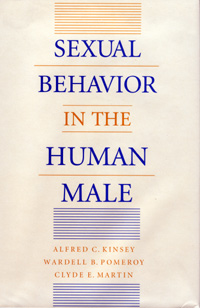The History of Psychiatry & Homosexuality
- Sodomy and Other "Crimes Against Nature"
- Medicalizing Sexual Inversion
- Psychoanalysis and Homosexuality
- Declassification of Homosexuality by the American Psychoanalytic Association
- History of the Association of Gay and Lesbian Psychiatrists
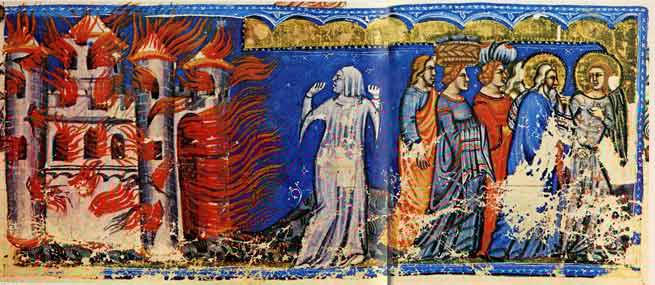
Lot leaving Sodom
Goal
The participant will understand major events in the history of psychiatry and homosexuality.
Objectives
- to understand how homosexuality became thought of as a psychiatric disorder
- to understand the research that led to the declassification of homosexuality as a disorder
- to have an appreciation of current professional positions on homosexuality
Pre-Test
- The Kinsey Scale spans from zero to:
- 2
- 4
- 6
- 8
- Evelyn Hooker's research in the 1950's showed:
- homosexuality was common in the animal kingdom
- there was no difference between hetero and homosexual men in terms of mental illness
- homosexual men were less aggressive than heterosexual men
- homosexuals were more numerous in the population than people generally believed
- Sigmund Freud believed:
- homosexuality was a mental disorder
- homosexual patients should receive treatment to change to heterosexual
- homosexuality was not something of which one should be ashamed
- homosexuality was a mature form of sexuality
- Whose mid-20th-century scientific contributions led to the psychiatric normalization of homosexuality?
- Alfred Kinsey
- Havelock Ellis
- Richard von Krafft-Ebing
- Sigmund Freud
- Magnus Hirschfeld
Sodomy and Other "Crimes Against Nature"
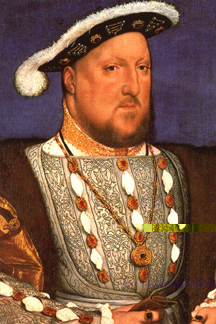
King Henry VIII
Until the nineteenth century, same-sex sexual activity (particularly between men) was referred to in Anglo-American texts under the terms "unnatural acts," "crimes against nature," "sodomy," or "buggery." Sodomy, derived from the biblical tale of Sodom (Genesis 19:1-8), was first used in the 11th century by Saint Peter Damien and could refer to any form of biblically condemned sexual activity. This included masturbation, "fornication," bestiality, and oral or anal sex (whatever the sex of the participants). Most commonly it referred to anal sex between men. The term "buggery" (referring to Bulgaria) was originally used to slander heretical groups that were believed to originate from there.
In Europe and America the condemnation of male-male sodomy is based on Old Testament law that assigned the death penalty for a man who "lies with a male as with a woman" (Leviticus 20:13). Theologians have debated what exactly these biblical passages refer to in the original Hebrew and Greek texts. Through the Middle Ages, ecclesiastical courts were charged with trying cases of "sodomy" most commonly pursued when heretical or anti-church activity was also suspected.
In 1533, England enacted the first secular law criminalizing "the abominable vice of buggery" and making it punishable by hanging. The Buggery Act was part of King Henry VIII's anticlerical campaign to discredit the Catholic church and seize its property. The English colonies in America adopted English law against sodomy or, as in case of Plymouth, Massachusetts Bay, Connecticut, New Hampshire and Rhode Island colonies, simply cited Leviticus as the basis for establishing sodomy as a capital offense.
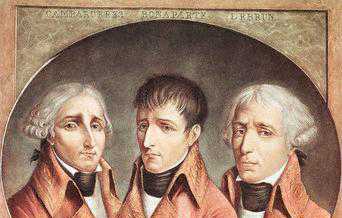
(L-R) Jean-Jacques-Régis de Cambacérès,
Napoléon Bonaparte, Charles François LeBrun
The European decriminalization of sodomy began in post-Revolutionary France. The Constituent Assembly abrogated laws criminalizing "crimes against nature" in 1791 when it abolished ecclesiastical courts. This followed from the broader spirit of Enlightenment legal reform that protected the private sphere from state intrusion. The public and minors were still deemed to require state protection; therefore, the Law of 19-22 July 1791 and the Napoleonic Penal Code of 1810 criminalized "debauchery or corruption" of minors of either sex and "offenses against public decency" including sex in public places such as parks or bathrooms. However, the Code Napoléon never criminalized homosexuality itself thanks to the influence of Jean-Jacques-Régis de Cambacérès, the Second Consul who was a homosexual man.
Men arrested under suspicion of public sex were subjected to medical examinations to help determine if anal sex had taken place. Therefore, medico-legal experts were the first to become interested in the scientific study of sexuality in the 19th century. Auguste Ambroise Tardieu (1818-1879) published his Medico-Legal Study of Offenses Against Public Decency (1857). Tardieu argued that penile and anal physical stigmata invariably betrayed inveterate sodomites. Furthermore, he suggested there were psychological and behavioral traits (such as effeminacy and cross-dressing), that betrayed a subset of exclusive sodomites who he believed suffered from a form of insanity.
Medicalizing Sexual Inversion
The medical literature on homosexuality that grew rapidly in the late 19th century was largely written by medico-legal experts concerned with determining whether certain people accused of criminal sexual behavior should be considered innocent because of a constitutional defect or mental illness. Although such pathologization may seem stigmatizing, at the time it could also serve liberatory aims since it wrested the issue of sodomy from the police and courts.
German lawyer Karl Heinrich Ulrichs (1825-1895) was perhaps the first activist for homosexual civil rights. He argued against Germany's adoption of Prussian law criminalizing sodomy (Paragraph 175). In a series of pamphlets published from 1864 to 1879, he argued that same-sex love was a congenital, hereditary condition, not a matter of immorality; therefore, it should not be criminally persecuted. He called himself and those like him "Urnings" who had a female soul in a male body. He hypothesized that there were competing male and female "germs" that determined male and female anatomy and psyche. Ulrichs proposed that Urnings were a form of psychosexual hermaphrodites.
Hungarian writer and journalist Karl Maria Kertbeny (1824-1882) coined the term "homosexual" in 1869 in his campaign against the German sodomy laws. Like Ulrich, he argued that homosexual attraction was innate, but did not believe all homosexuals were psychologically effeminate.
Ulrichs's writings influenced the noted German physician Karl Westphal (1833-1890), who in 1869 published an article describing the cases of an effeminate male and a masculine female with same-sex attraction. He called the condition "contrary sexual sensation" and claimed it was congenital. As such, he argued, it should come under psychiatric care rather then legal prosecution.
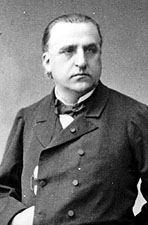 Westphal's
diagnosis was rendered into Italian by forensic expert
Arrigo Tamassia
as "inversion of the sexual instinct" (1878). The celebrated French
neurologist
Jean Martin Charcot (1825-1993)
rendered it into
French in 1882 as "inversion of the genital sense" in an article
describing a variety of "sexual perversions" including inversion and
fetishism. Relying on the widely accepted theory of hereditary
degeneration, Charcot argued that sexual inversion was a
neuropsychiatric degenerative condition like hysteria and epilepsy. As
such, he believed it was a serious mental illness likely to be
associated with other disorders.
Westphal's
diagnosis was rendered into Italian by forensic expert
Arrigo Tamassia
as "inversion of the sexual instinct" (1878). The celebrated French
neurologist
Jean Martin Charcot (1825-1993)
rendered it into
French in 1882 as "inversion of the genital sense" in an article
describing a variety of "sexual perversions" including inversion and
fetishism. Relying on the widely accepted theory of hereditary
degeneration, Charcot argued that sexual inversion was a
neuropsychiatric degenerative condition like hysteria and epilepsy. As
such, he believed it was a serious mental illness likely to be
associated with other disorders.
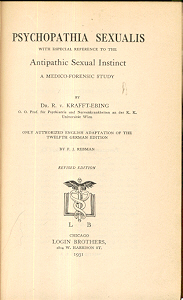
Psychopathia Sexualis (1886)
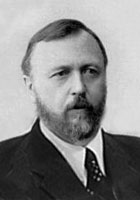 Other
German forensic writers followed Westphal's lead, most notably Richard
von Krafft-Ebing (1840-1902). His Psychopathia Sexualis with
Especial Reference to the Antipathic Sexual Instinct: A Medico-Forensic
Study (1886) was first published as a small booklet and then
vastly expanded over the years into an encyclopedia of sexuality.
Krafft-Ebing introduced many terms into the medical nosology such as
"sadism" and "masochism." Although he did not coin the word "homosexuality,"
his work popularized it. Krafft-Ebing initially presented homosexuality
as a severe manifestation of hereditary degeneration, but late in his life, after having met many homosexuals, he argued
that they could be perfectly respectable and functional
individuals. He was a political liberal who argued against sodomy laws
and testified in the defense of homosexuals.
Other
German forensic writers followed Westphal's lead, most notably Richard
von Krafft-Ebing (1840-1902). His Psychopathia Sexualis with
Especial Reference to the Antipathic Sexual Instinct: A Medico-Forensic
Study (1886) was first published as a small booklet and then
vastly expanded over the years into an encyclopedia of sexuality.
Krafft-Ebing introduced many terms into the medical nosology such as
"sadism" and "masochism." Although he did not coin the word "homosexuality,"
his work popularized it. Krafft-Ebing initially presented homosexuality
as a severe manifestation of hereditary degeneration, but late in his life, after having met many homosexuals, he argued
that they could be perfectly respectable and functional
individuals. He was a political liberal who argued against sodomy laws
and testified in the defense of homosexuals.
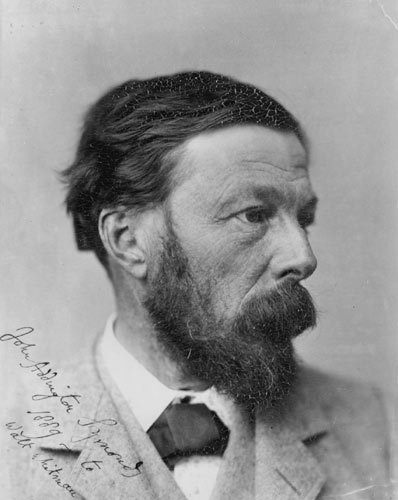
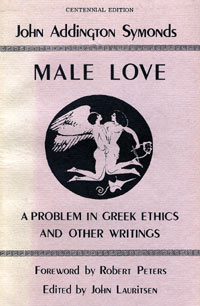
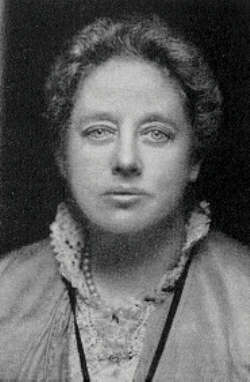
Edith Lees (1861-1916)

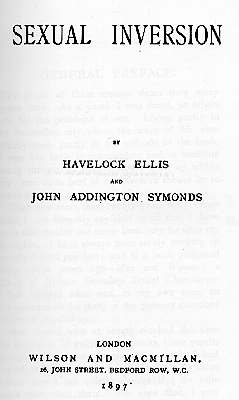
The term "sexual inversion" was popularized in English with the publication of a book of the same title written by sexologist Havelock Ellis (1859-1939) and his homosexual collaborator John Addington Symonds (1840-1893). Although Ellis was not homosexual, his wife, Edith Lees, was a lesbian and he counted many homosexual friends in his circle of radical intellectuals in London. Ellis believed homosexuality was a congenital variation of sexuality and not a disease.
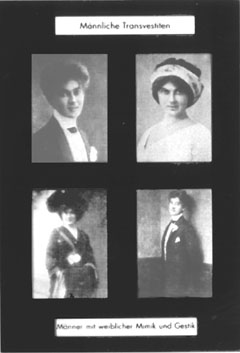
Male Transvestite. Illustration from
Hirschfeld's book on transvestism
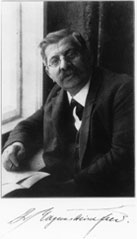 The notion of sexual inversion continued to dominate
medical thinking about homosexuality into the twentieth century as
biomedical researchers employed the latest techniques to uncover its
biological basis. Even before sex hormones were discovered, homosexuals
were hypothesized to be neuro-endocrinological hermaphrodites. This was
the preferred hypothesis of German sexologist
Magnus Hirschfeld (1868-1935).
Hirschfeld was
perhaps the first physician who was public about his own homosexuality
and was a tireless advocate for homosexual rights. He founded the
Scientific Humanitarian Committee in Berlin in 1897, which lobbied for
the decriminalization of homosexual acts. He also founded the Institute for Sexual Science (1919-1933), which
was closed down by the Nazis. Hirschfeld argued homosexuality was an
intermediate sex and a natural, biological variant in the spectrum
between perfect maleness and femaleness. Hirschfeld was also a pioneer
in writing about
transsexualism
and
transvestism.
The notion of sexual inversion continued to dominate
medical thinking about homosexuality into the twentieth century as
biomedical researchers employed the latest techniques to uncover its
biological basis. Even before sex hormones were discovered, homosexuals
were hypothesized to be neuro-endocrinological hermaphrodites. This was
the preferred hypothesis of German sexologist
Magnus Hirschfeld (1868-1935).
Hirschfeld was
perhaps the first physician who was public about his own homosexuality
and was a tireless advocate for homosexual rights. He founded the
Scientific Humanitarian Committee in Berlin in 1897, which lobbied for
the decriminalization of homosexual acts. He also founded the Institute for Sexual Science (1919-1933), which
was closed down by the Nazis. Hirschfeld argued homosexuality was an
intermediate sex and a natural, biological variant in the spectrum
between perfect maleness and femaleness. Hirschfeld was also a pioneer
in writing about
transsexualism
and
transvestism.
Although Hirschfeld did not advocate attempts to cure homosexuality, he was impressed with the research of endocrinologist Eugen Steinach (1861-1944) on altering the sexual characteristics of rats through castration or testes implants. Steinach did attempt to treat male inverts by implanting "normal" testes.
The inversion hypothesis was still in place in the 1930s, when psychiatrist George Henry and his Committee for the Study of Sex Variants scrutinized homosexuals' bodies in an effort to document the sex-atypicality of their genitals and secondary sex characteristics. Homosexual brains and nervous systems were assumed to have some cross-gendered characteristics. Even at the end of the 20th century, neuroanatomical research on sexual orientation relies on the inversion hypothesis: an article by Simon LeVay argued that an area of homosexual men's hypothalamus was closer in size to that of women than heterosexual men.
Eugen Steinach
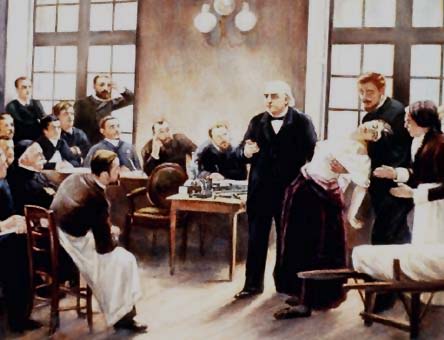
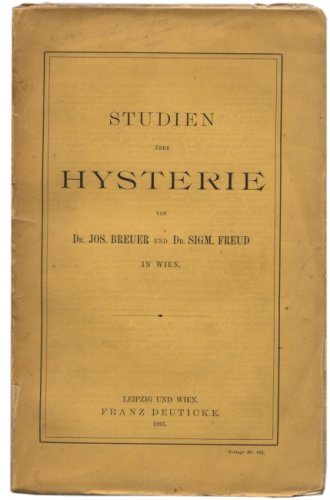
Charcot demonstrating an "hysterical fit" in
"Blanche" (Marie Wittman), by André Brouillet (1887)
Psychoanalysis & Homosexuality
 Sigmund Freud,
who originally trained as a neurologist, was the father of
psychoanalysis. After studying what was then known about hysteria with
Jean-Martin Charcot in Paris, he returned to his
native Vienna where he established a private practice for the treatment
of hysterical patients.
Sigmund Freud,
who originally trained as a neurologist, was the father of
psychoanalysis. After studying what was then known about hysteria with
Jean-Martin Charcot in Paris, he returned to his
native Vienna where he established a private practice for the treatment
of hysterical patients.
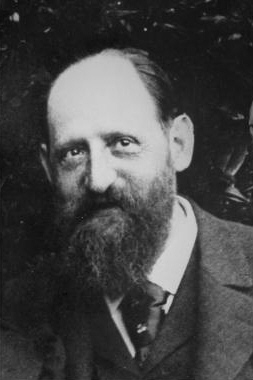
His most significant early publication in this area was the 1895 Studies in Hysteria whose senior author was Josef Breuer. Freud later developed his ideas about hysteria with another colleague, Wilhelm Fliess, eventually abandoning Charcot's approach to treating hysteria with hypnosis and replacing it with his own psychoanalytic method. Freud extrapolated general principles of human psychology from his work with hysterics, leading to the publication of two important, early works. He laid out his first (topographical) theory of the mind in The Interpretation of Dreams (1899). In his Three Essays on the Theory of Sexuality (1905), he put forward sexual theories, including his thoughts on the origins and meanings of homosexuality.
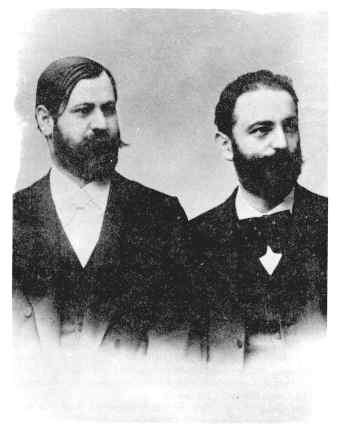
Sigmund Freud & Wilhelm Fliess
Psychoanalytic scholar, Kenneth Lewes (1988), argues that Freud actually had four theories of homosexuality:
- Homosexuality arises as an outcome of the Oedipus conflict and the boy's discovery that his mother is castrated. This induces an intense castration anxiety that causes the boy to turn from his castrated mother to a "woman with a penis," i.e., a boy with a feminine appearance.
- In the Three Essays, Freud developed the theory that the future homosexual child is so over-attached to his mother that he identifies with her and narcissistically seeks love objects like himself so he can love them like his mother loved him.
- If a "negative" or "inverted" Oedipus complex occurs, a boy seeks his father's love and masculine identification by taking on a feminine identification and reverting to anal eroticism.
- Finally, homosexuality could result from reaction formation: sadistic jealousy of brothers and father is safely converted into love of other men.
Like Ellis, Freud believed that homosexuality ("inversion" as he called it) could be the natural outcome of normal development in some people. He noted that homosexuality could occur in individuals who had no other signs of deviation and no impairment in their functioning. However, he did not view homosexuality as a sign of illness, by which he meant a symptom arising from psychic conflict. Instead, he saw homosexuality as the unconflicted expression of an innate instinct. Freud believed in a constitutional bisexuality: that in every individual there was a certain component of masculine (active) as well as feminine (passive) tendencies. Although bisexual tendencies were universal, Freud believed some people were constitutionally endowed with more of one tendency than the other. He believed life experiences, particularly traumatic ones (environmental factors), could have an impact on the development and expression of one's innate instincts (biological factors). Under normal and non-traumatic circumstances, the component instincts that determine the sex of one's final object choice should be consistent with one's anatomical sex. That is to say an anatomic male should ideally express the masculine component instinct and obtain sexual satisfaction from women. However, Freud also believed that even adult heterosexuals retain the homosexual component, albeit in sublimated form. Freud saw adult homosexuality as a developmental arrest of childhood instincts which prevent the development of a more mature heterosexuality. Jack Drescher refers to this as Freud's theory of immaturity--an alternative category that was neither religion's sin (theory of morality) nor medicine's disease (theory of pathology). Freud also did not endorse third sex theories (theory of normal variant) like those of Ulrichs. Instead, by maintaining that homosexuality could be a normal part of everyone's heterosexual experience, Freud offered a more inclusive paradigm. It allowed for the possibility that the adult homosexual person might sufficiently mature and, if sufficiently motivated, become heterosexual.
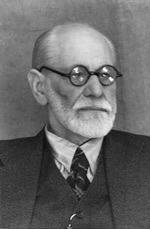
Late in his life, Freud expressed pessimism about the possibility of effecting a sexual conversion in most people. In his 1935 "Letter to an American Mother," he reassures a woman asking him to "cure" her son, that:
"Homosexuality is assuredly no advantage, but it is nothing to be ashamed of, no vice, no degradation; it cannot be classified as an illness; we consider it to be a variation of the sexual function, produced by a certain arrest of sexual development. Many highly respectable individuals of ancient and modern times have been homosexuals, several of the greatest men among them (Plato, Michelangelo, Leonardo da Vinci, etc.) ... By asking me if I can help, you mean, I suppose, if I can abolish homosexuality and make normal heterosexuality take its place. The answer is, in a general way, we cannot promise to achieve it. In a certain number of cases we succeed in developing the blighted germs of heterosexual tendencies which are present in every homosexual, in the majority of cases it is no more possible."
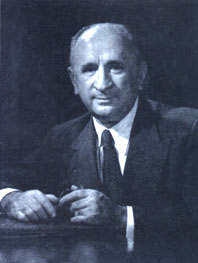
Several years after Freud's death, however, analyst Sandor Rado's theory of homosexuality would eventually supplant Freud's. In a 1940 article, "A Critical Examination of the Concept of Bisexuality," Rado argued that Freud's theory of bisexuality was based on a faulty 19th century belief in embryonic hermaphroditism, a disproved hypothesis that every embryo had the potential to become an anatomical man or a woman. Since the original theory upon which Freud had based his belief in bisexuality had been disproven, Rado claimed heterosexuality as the only nonpathological outcome of human sexual development.
Rado viewed homosexuality as a phobic avoidance of the other sex caused by parental prohibitions against childhood sexuality. Almost all of the mid-twentieth century psychoanalytic theorists who pathologized homosexuality followed Rado's theory in one form or another. The psychoanalytic shift from Freud's theory of immaturity (homosexuality as a normal developmental step toward adult heterosexuality) to Rado's theory of pathology (homosexuality as a sign of development gone awry) led some analysts to optimistically claim that they could "cure" homosexuality. Analysts whose work was in the tradition of Rado included Irving Bieber, Charles Socarides, Lionel Ovesey, and Lawrence Hatterer.
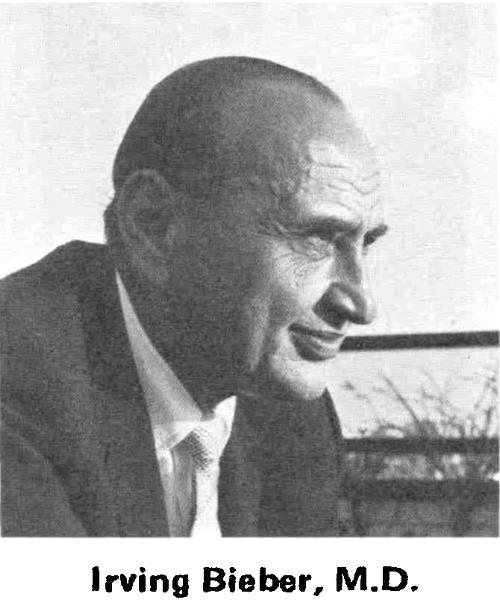
In 1962, Bieber and his colleagues published Homosexuality: A Psychoanalytic Study. Their work was particularly influential in its portrayal of a pathogenic family type--a detached and rejecting father and a close-binding and domineering mother--that presumably led to homosexuality in the 106 adult homosexual men they studied. Bieber and his colleagues claimed a 27% cure rate of the patients in their study. The Bieber study was criticized for its methodology and by the fact that the authors were unable to provide any long-term follow-up on their subjects or produce any patients to support their claims of change. In addition, the theory of familial etiology is not supported by Bell, Weinberg and Hammersmith's 1981 study of larger, nonpatient gay male populations, Sexual Preference: Its Development in Men and Women. Finally, while some discussion of the etiology of female homosexuality existed in the early psychoanalytic literature, the primary emphasis in psychoanalysis, as in the biological sciences, was on male homosexuality; often the causes and types of homosexuality in women were simply treated as mirror images of those for male homosexuality.
Early Theoretical Assumptions
Late nineteenth and early twentieth century theories of homosexuality largely relied upon a dichotomous model of human nature using categories such as male/female, masculine/feminine, and heterosexual/homosexual. Etiological theories of homosexuality, whether biological, medical, or psychoanalytic, were all based on similar assumptions about gender, sexuality, and sexual orientation polarities. Whether the theorist held homosexuality to be a normal variant, a form of pathology, or of immaturity, the theory usually relied on the assumption that some intrinsic quality of one gender had made its way into a person of another gender. The beliefs upon which all these theories rested was that the wide range of human sexuality could be understood when reduced to the two component parts of male and female. Early studies of homosexuality within the medical and the psychoanalytic fields led to similar outcomes:
- The removal of responsibility for defining homosexuality from the realms of morality and religion and securing it within science and medicine.
- The creation of a category of person, the "homosexual," who stood in contrast to the moral/religious belief that homosexuality was a behavior rather than a source of identity.
- The perpetuation of homosexuality's social stigma by taking it out of the realm of sin and immorality and placing it within the realm of pathology and immaturity. However, these developments would eventually set the stage for the normalization of homosexuality that began to occur in the mid-twentieth century.
The Declassification of Homosexuality by the American Psychiatric Association
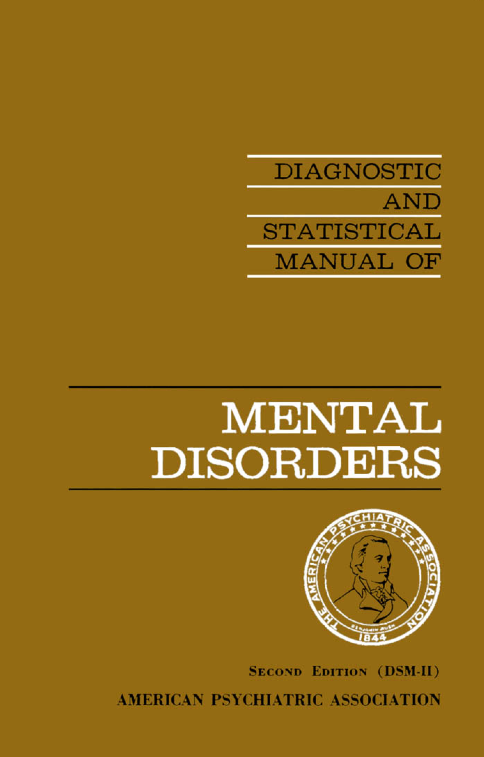
DSM-II
The American Psychiatric Association (APA) removed homosexuality from its official Diagnostic and Statistical Manual of Mental Disorders (DSM) in 1973. This decision occurred in the context of momentous cultural changes brought on by the social protest movements of the 1950s to the 1970s: beginning with the African-American civil rights movement, then evolving on to the women's and gay rights movements.
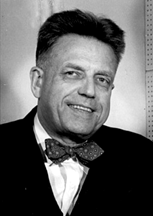 Just as influential in the APA's decision were the research studies on
homosexuality of the 1940's and 1950's. Alfred Kinsey's
and colleagues' study on male and female sexuality marked the beginning of a cultural shift away from the
view of homosexuality as pathology and toward viewing it as a normal
variant of human sexuality. Kinsey had criticized scientists' tendency
to represent homosexuals and heterosexuals as "inherently different
types of individuals." Therefore, he introduced a 0 to 6 scale to
classify sexual behavior or fantasy from "exclusively heterosexual" to
"exclusively homosexual" (the "Kinsey Scale"). The "Kinsey
Reports" found that 37% of males and 13% of females had at least
some overt homosexual experience to the point of orgasm; furthermore, 10% of males
were more or less exclusively homosexual and 8% of males were
exclusively homosexual for at least three years between the ages of 16
and 55. This is where the frequently quoted "10%" figure comes from.
2-6% of women reported more or less exclusively homosexual experience or
response. A more modest 4% of males and 1-3% of females had been
exclusively homosexual after the onset of adolescence until the time of
the interview.
Just as influential in the APA's decision were the research studies on
homosexuality of the 1940's and 1950's. Alfred Kinsey's
and colleagues' study on male and female sexuality marked the beginning of a cultural shift away from the
view of homosexuality as pathology and toward viewing it as a normal
variant of human sexuality. Kinsey had criticized scientists' tendency
to represent homosexuals and heterosexuals as "inherently different
types of individuals." Therefore, he introduced a 0 to 6 scale to
classify sexual behavior or fantasy from "exclusively heterosexual" to
"exclusively homosexual" (the "Kinsey Scale"). The "Kinsey
Reports" found that 37% of males and 13% of females had at least
some overt homosexual experience to the point of orgasm; furthermore, 10% of males
were more or less exclusively homosexual and 8% of males were
exclusively homosexual for at least three years between the ages of 16
and 55. This is where the frequently quoted "10%" figure comes from.
2-6% of women reported more or less exclusively homosexual experience or
response. A more modest 4% of males and 1-3% of females had been
exclusively homosexual after the onset of adolescence until the time of
the interview.
"Males do not represent two discrete populations, heterosexual and homosexual. The world is not to be divided into sheep and goats. It is a fundamental of taxonomy that nature rarely deals with discrete categories... The living world is a continuum in each and every one of its aspects." (Kinsey, et al. 1948 Sexual Behavior in the Human Male (1948), p. 639).
0- Exclusively heterosexual with no homosexual
1- Predominantly heterosexual, only incidentally homosexual
2- Predominantly heterosexual, but more than incidentally homosexual
3- Equally heterosexual and homosexual
4- Predominantly homosexual, but more than incidentally heterosexual
5- Predominantly homosexual, only incidentally heterosexual
6- Exclusively homosexual
(Kinsey 1948), p. 638
Clellan Ford and Frank Beach's Patterns of Sexual Behavior (1951), relying on data from the Human Relations Area Files, found homosexuality to be common across cultures and to exist in almost all nonhuman species. Their work supported the notion that homosexuality was both natural and widespread.
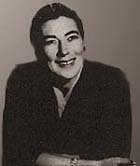 Psychologist Evelyn
Hooker's groundbreaking study compared the projective test results
from 30 nonpatient homosexual men with those of 30 nonpatient
heterosexual men. The study found that experienced psychologists,
unaware of whose test results they were interpreting, could not
distinguish between the two groups. This study was a serious challenge
to the view that homosexuality was always associated with
psychopathology.
Psychologist Evelyn
Hooker's groundbreaking study compared the projective test results
from 30 nonpatient homosexual men with those of 30 nonpatient
heterosexual men. The study found that experienced psychologists,
unaware of whose test results they were interpreting, could not
distinguish between the two groups. This study was a serious challenge
to the view that homosexuality was always associated with
psychopathology.
Homosexuality had been officially classified as a mental disorder in the APA's first Diagnostic and Statistical Manual of Mental Disorders (DSM-1) in 1952. There it was designated as a "sociopathic personality disturbance." Viewing homosexuality as a mental illness was not controversial at the time as it coincided with prevailing societal attitudes. DSM-II, published in 1968, listed homosexuality as a sexual deviation, but sexual deviations were no longer categorized as a sociopathic personality disturbance.
The publication of DSM-II coincided with the emergence of the gay rights movement. The Stonewall riots in 1969 in New York City marked a watershed event in the movement. Having successfully challenged the police and government attempts to shut down public places where gay people gathered, gay activists would soon challenge psychiatric authority as well.
Before the Stonewall riots, homophile groups had accepted the medical view of homosexuality as a mental disorder. Their view had been that accepting homosexuality as disease meant treating it as a disability, rather than a moral or religious sin, and would lead to more objective and humane attitudes.
A new generation of gay rights activists viewed medical and psychiatric portrayals of homosexuality to be just as problematic as the religious views. Gay men and women were still being denied many basic rights and the designation of homosexuality as a mental disorder had only exacerbated antihomosexual societal prejudices, leaving gay men and women vulnerable in terms of their physical safety, economic security, and overall well being.
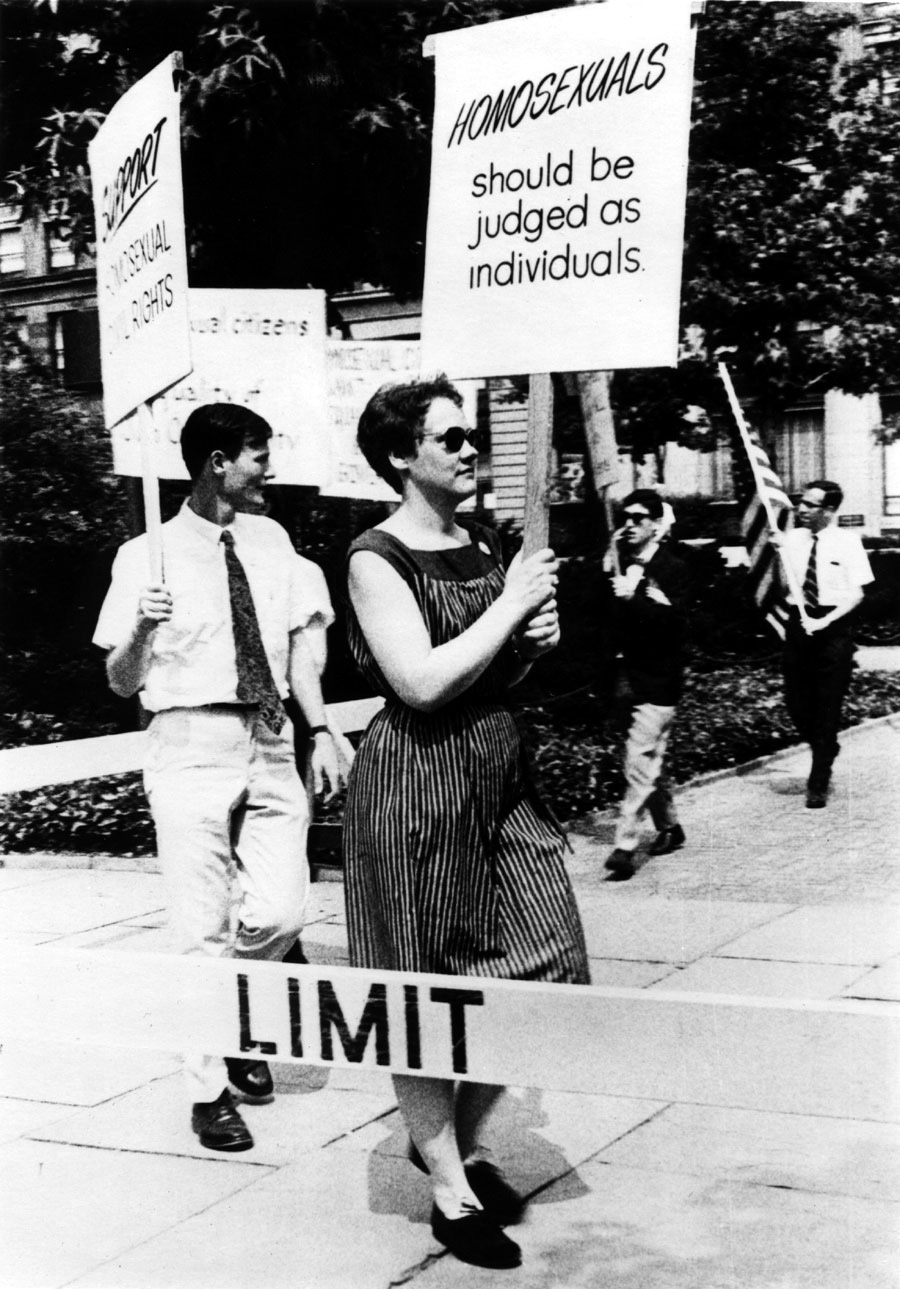
Barbara Gittings marching at a
homosexual rights demonstration
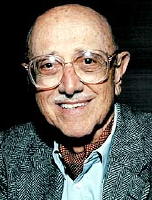
Gay activists began to confront the APA about its position on homosexuality. There were a series of dramatic encounters between activists and psychiatrists at the annual meetings of the APA between 1970 and 1972. While the opposition to the activists was vehement by some in the APA, there were increasing numbers of psychiatrists (e.g., Judd Marmor) who supported the activists' view.
These were members who were familiar with the research findings showing that homosexuality occurred in large numbers of people, in persons who demonstrated normal psychological adjustment, and that it is present across a range of cultures.

Dr. Robert Spitzer and other members of the APA Task Force on Nomenclature and Statistics agreed to meet with a group of gay activists who presented the scientific evidence to its members and convinced the Task Force to study the issue further. The subsequent research review led the Nomenclature Committee of the APA to propose that homosexuality be eliminated from the DSM. This proposal was approved by the APA's Council on Research and Development, its Reference Committee, and by the Assembly of District Branches before being accepted by the APA's Board of Trustees in December 1973. Other major mental health professional organizations, including the American Psychological Association and the National Association of Social Workers, soon endorsed the APA action. The decision to declassify homosexuality was accompanied by the passage of an APA Position Statement, which supported the protection of the civil rights of homosexual persons.
Some APA members, primarily psychoanalysts who continued to espouse pathologizing views of homosexuality, challenged the leadership of the APA by calling for a referendum of the entire APA membership. The decision to remove homosexuality was upheld by a 58% majority of voting APA members.
When the diagnosis of homosexuality was deleted in 1973, the APA did not initially embrace a normal variant model of homosexuality (Drescher 1998, Bayer 1987, Krajeski 1996). In recognition of the opposition, it made a compromise. The DSM-II diagnosis of Sexual Orientation Disturbance (SOD) replaced Homosexuality. Accordingly, individuals comfortable with their homosexuality were no longer considered mentally ill. Only those who were "in conflict with" their sexual orientation had a mental disorder (SOD). This compromise engendered continued controversy. Those opposing it pointed out there were no reported cases of unhappy heterosexual individuals seeking treatment to become homosexual. This problem was addressed in the 1980's DSM-III where SOD was replaced by ego-dystonic homosexuality (EDH).
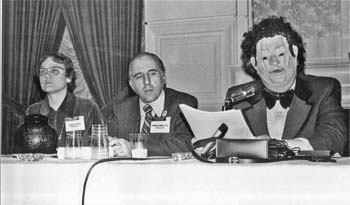
Barbara Gittings, Frank Kameny and Dr. H Anonymous
(aka Dr. John E. Fryer) at the 1972 annual APA conference.
[Photo: Kay Tobin Lahusen]
During the revision process of DSM-III in the mid 1980's EDH also engendered enormous controversy. In these debates openly gay and lesbian members of the APA played a decisive role in bringing about change (Krajeski 1996). Those on the APA Advisory Committee working on the revision who wanted to retain the EDH category argued that they believed the diagnosis was clinically useful and that it was necessary for research and statistical purposes. The opponents noted that making a patient's subjective experience of their own homosexuality the determining factor of their illness was not consistent with the new evidence-based approach that psychiatry had espoused. They argued that empirical data do not support the diagnosis and that it is inappropriate to label culturally induced homophobia as a mental disorder. The APA Committee agreed with the opponents and the diagnosis of ego-dystonic homosexuality was removed from DSM-III-R (1987).
Many of those opposed to the diagnosis of EDH had viewed it as a diagnostic relic that had indirectly, if not directly, perpetuated the mental illness model of homosexuality. Removing it was a crucial step in a paradigm shift that would help psychiatry focus on more relevant models and concepts in understanding gay men and lesbians. The change nevertheless remains controversial, and a small group of psychologists and analysts (the National Association for Research and Therapy of Homosexuality [NARTH]) continues to argue that homosexuality is a dysfunction and can be corrected.
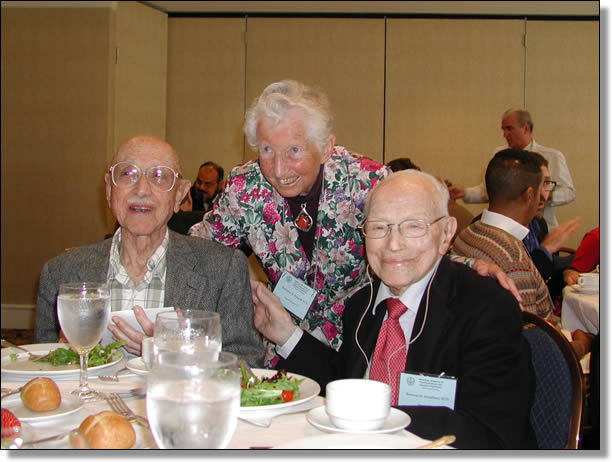
Drs. Judd Marmor, Marianne Horney Eckhardt,
and Bert Schaffner
The change also encouraged the American Psychological Association and other mental health groups to depathologize homosexuality as well as make further progressive statements on gays and lesbians. The American Psychiatric Association (APA) labeled discrimination in employment based on sexual orientation as irrational in 1988. It opposed exclusion and dismissal from the armed forces on the basis of sexual orientation in 1990. In 1991, the APA added immigration and naturalization decisions to areas in which it opposes discrimination against homosexuals. It supported the right to privacy in adult consensual relations conducted in private, also in 1991. In 1992, the APA encouraged its members to help prevent and respond actively to bias-related incidents related to sexual orientation. An APA position statement in 1998 opposed any psychiatric treatment based on the assumption that homosexuality is a medical disorder or that patients should change their sexual orientation, including "reparative" or "conversion therapies." This was extended in 2000 to a recommendation that ethical practitioners refrain from attempts to change sexual orientation in the absence of research substantiating "reparative" therapies. Also in 2000, the APA approved a position statement supporting the legal recognition of same-sex unions. It endorsed an initiative allowing adoption and co-parenting of children by same-sex couples in 2002. In 2005, the APA endorsed the right of gay people to enter into same-sex civil marriage. The American Psychoanalytic Association (APsaA) adopted a position statement in 1991 opposing discrimination against gay people, and it directed that the selection of candidates for training not be based on sexual orientation. In 1997, ApsaA endorsed same-gender couples having equal rights to marry. It affirmed that "reparative" therapy is against fundamental principles of psychoanalytic treatment in 2000, and it opposed discrimination based on sexual orientation in parenting and adoption in 2002. The World Health Organization removed homosexuality from ICD-10 in 1992.
History of the Association of Gay and Lesbian Psychiatrists
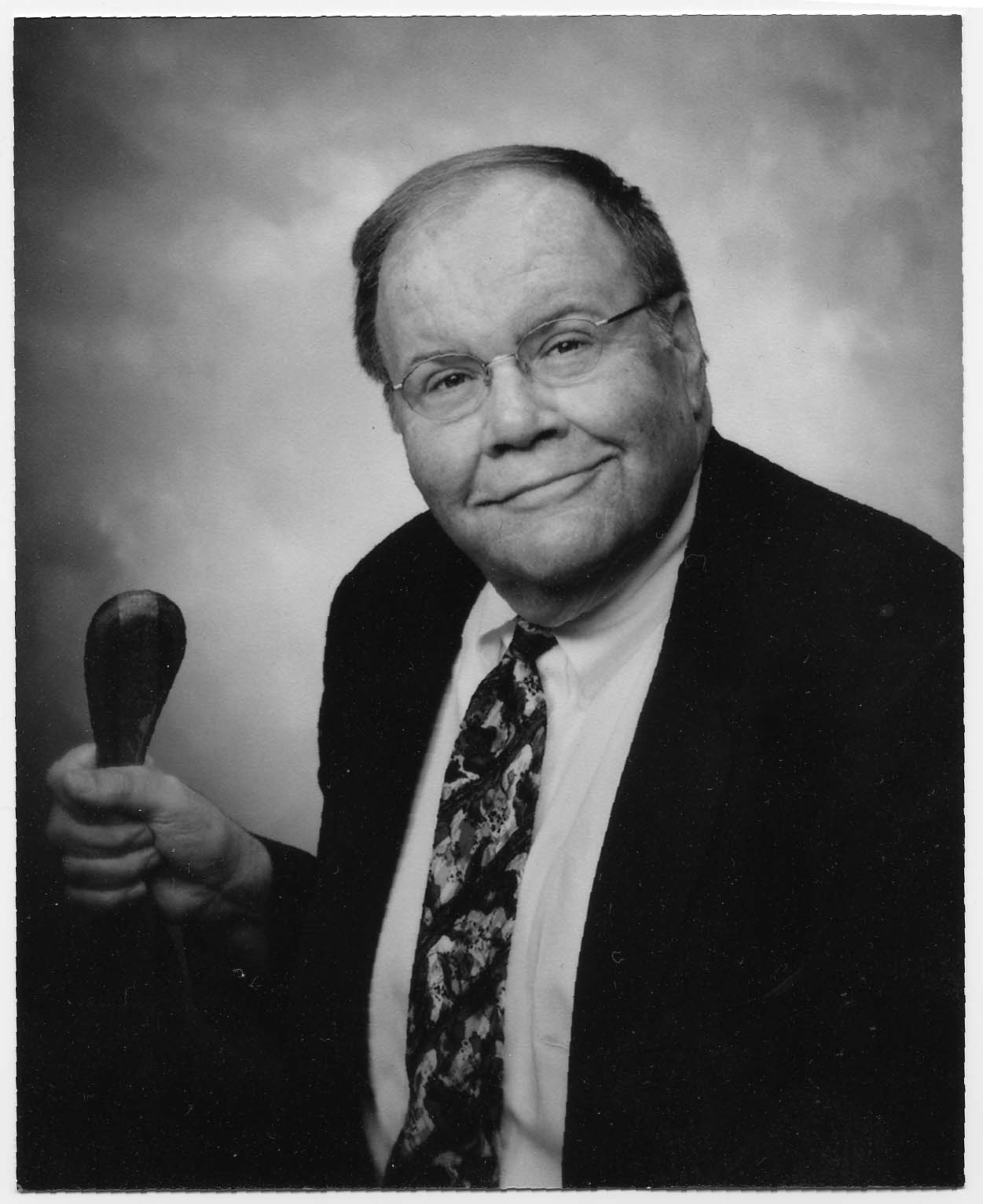
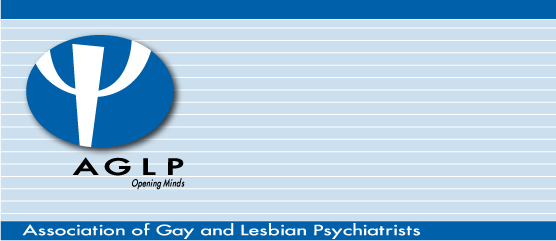
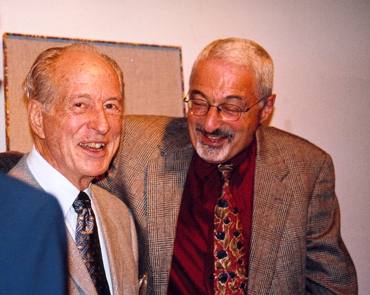
Frank Rundle, M.D., with David Kessler, M.D.,
(Second AGLP President) at the AGLP Awards
Banquet in San Francisco [Photo: Robin Rundle]
Gay and lesbian psychiatrists met informally and in secret for many years during the course of the annual meeting of the American Psychiatric Association, often in gay bars or members' hotel suites. Difficult as it may be for today's young psychiatrist to imagine, prior to the declassification of homosexuality in 1973, a psychiatrist who revealed that he or she was gay risked not only losing their job but in some states their medical license as well.
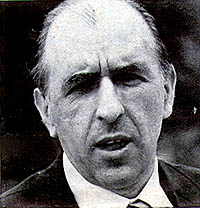 As a result of
non-psychiatrist gay activists protesting and disrupting the APA's 1970
and 1971 annual meetings, the first gay-affirmative presentations were
organized at the APA. At the 1972 annual meeting in Dallas, gay
psychiatrist
John Fryer, MD
appeared on a panel ("Psychiatry: Friend or Foe to Homosexuals?")
organized by the gay activists
Barbara Gittings
and Frank Kameny, who appeared with Fryer and with
Judd Marmor, M.D. a prominent heterosexual psychiatrist and supporter
of removing homosexuality as a diagnosis. Dr. Fryer appeared as "Dr. H. Anonymous," disguised in an oversized
tuxedo, a cloak, a rubber fright mask, so as to disguise his identity.
He stunned the audience of psychiatrists by stating in a voice
distorted to further protect his identity, "I am a homosexual. I am a
psychiatrist." He went on to describe the plight of being a closeted
gay doctor in a field that still classified homosexuality as a mental
illness. It was the first time a gay psychiatrist had dared address
colleagues at a professional meeting.
As a result of
non-psychiatrist gay activists protesting and disrupting the APA's 1970
and 1971 annual meetings, the first gay-affirmative presentations were
organized at the APA. At the 1972 annual meeting in Dallas, gay
psychiatrist
John Fryer, MD
appeared on a panel ("Psychiatry: Friend or Foe to Homosexuals?")
organized by the gay activists
Barbara Gittings
and Frank Kameny, who appeared with Fryer and with
Judd Marmor, M.D. a prominent heterosexual psychiatrist and supporter
of removing homosexuality as a diagnosis. Dr. Fryer appeared as "Dr. H. Anonymous," disguised in an oversized
tuxedo, a cloak, a rubber fright mask, so as to disguise his identity.
He stunned the audience of psychiatrists by stating in a voice
distorted to further protect his identity, "I am a homosexual. I am a
psychiatrist." He went on to describe the plight of being a closeted
gay doctor in a field that still classified homosexuality as a mental
illness. It was the first time a gay psychiatrist had dared address
colleagues at a professional meeting.

Over the next few years gay and lesbian members continued to organize and were often met by hostility (Hire 2007). Finally at the 1978 annual meeting a formal structure was adopted for the Gay, Lesbian, and Bisexual Caucus of the American Psychiatric Association, which is now named the Association of Gay and Lesbian Psychiatrists (AGLP). In 1978, an official APA Task Force on Gay, Lesbian, and Bisexual Issues was established which was given formal status as a standing committee in 1981. The following year, the Assembly (APA's legislative branch) approved adding elected representatives from a group initially designated as the Caucus of Homosexually Identified Psychiatrists, and later renamed the Caucus of Gay, Lesbian, and Bisexual psychiatrists. The Caucus is still active in the APA Assembly.
Since its founding, AGLP with a membership of over 600 psychiatrists, has been active in helping to shape the dramatic conceptual shift in the cultural understanding and significance of homosexual behavior within psychiatry and within society. With the support of AGLP members, the APA has issued Position Statements supporting same sex unions and the adoption and co-parenting of children by same sex couples, as well as a position statement opposing "Reparative Therapy" as unethical.
Post-test
- Evelyn Hooker's study showed than on the basis of psychological
testing:
- Homosexual men had less psychopathology than heterosexual men Homosexual men had less psychopathology than lesbian women
- Homosexual men could not be distinguished from heterosexual men
- Homosexual men could not be distinguished from lesbian women
- Homosexual men had more fun than heterosexual men
- The American Psychiatric Association removed the diagnosis of
homosexuality from the Diagnostic and Statistical Manual
- Because of political pressure from gay rights groups
- To lessen stigma of homosexuals
- Because scientific evidence did not support a pathological diagnosis
- All of the above
- The American Psychiatric Association considered homsexuality to
be psychiatric diagnosis until:
- 1896
- 1910
- 1973
- 1998
- In DSM-IV-TR homosexuality is described as:
- an axis II disorder
- a minor paraphilia
- biologically determined in most cases
- more common among men than women
- not described in DSM-IV-TR
- The theory of sexual inversion suggested that:
- Female inverts had a male soul in a female body
- Inverts were psychosexual hermaphrodites
- Male inverts had feminine interests
- All of the above
- What does the Kinsey scale measure?
- Frequency of sexual contacts
- Personal comfort with one's sexual orientation
- Relative sexual attraction to same or other sex partners
- Frequency of masturbation
- Studies conducted by Alfred Kinsey suggested that 37% of men and
13% of women had had some same sex sexual experiences:
- True
- False

